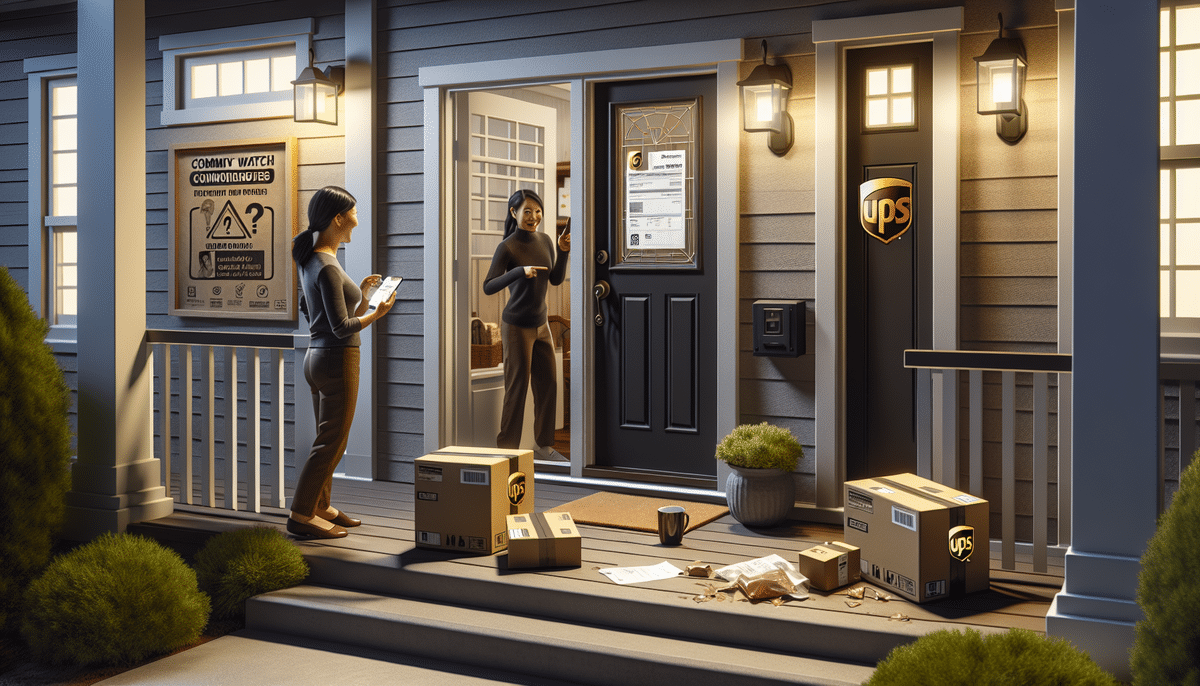Understanding Package Theft: Recognizing and Preventing the Issue
As online shopping continues to surge, package theft has become an increasingly prevalent issue for consumers. Whether your package contains valuable items or essential goods, the frustration and distress caused by theft are all too common. This section explores how to recognize if your package has been stolen and offers preventative strategies to safeguard your deliveries.
How to Identify If Your Package Has Been Stolen
Recognizing package theft involves noticing discrepancies in your delivery expectations. Key indicators include:
- Your package never arrives despite a confirmed delivery date.
- Notifications indicate delivery, but the package is nowhere to be found.
- Packages delivered to the wrong address or left in insecure locations.
Additionally, monitoring neighborhood activities and checking with neighbors can help determine if theft has occurred.
Common Scenarios of Package Theft and Prevention Tips
Package theft can occur in various ways, including:
- Cache Theft: Thieves follow delivery trucks to steal packages immediately upon arrival.
- Porch Piracy: Packages left unattended on porches or mailboxes are easy targets.
- Impersonation: Scammers posing as delivery personnel to deceive homeowners.
To prevent these scenarios:
- Use secure delivery locations such as smart lockers or package boxes.
- Schedule deliveries for times when you can personally receive them.
- Verify the identity of delivery personnel before accepting packages.
Responsibility and Legal Protections in Package Theft
When a package is stolen, understanding who holds responsibility is crucial. This section delves into the roles of sellers, carriers, and receivers, as well as the legal protections available to victims.
Who is Responsible for Stolen Packages?
Responsibility can vary based on several factors:
- After Delivery: Carriers like USPS, UPS, or FedEx may be liable, especially if insurance or delivery confirmation was used.
- Before Delivery: Sellers might be responsible if they failed to arrange secure delivery or insurance.
- Receiver's Role: Leaving packages unattended for extended periods can shift some responsibility to the recipient.
Legal Protections for Package Theft Victims
Victims of package theft have several avenues for legal recourse:
- Carrier Liability: Many carriers offer liability coverage; however, it's essential to understand the specific terms.
- State Laws: Various states have specific laws addressing package theft; consulting a legal expert can provide clarity.
- Police Reports: Filing a police report is often required by carriers to process claims.
Filing Claims and Seeking Compensation
To seek compensation for a stolen package:
- Contact the carrier with your tracking number and delivery details.
- Provide evidence such as security footage or witness statements.
- Adhere to the carrier's claim filing deadlines (e.g., USPS requires claims within 60 days).
Preventative Measures: Leveraging Technology and Best Practices
Preventing package theft involves a combination of technological solutions and practical strategies. This section outlines effective measures to secure your deliveries.
Technological Solutions
Modern technology offers various tools to protect your packages:
- Smart Lockers: Secure storage units that release packages only to authorized recipients.
- Security Cameras: Deter thieves by monitoring and recording delivery areas.
- Doorbell Cameras: Allow you to see and communicate with delivery personnel remotely.
According to a 2023 industry report, the adoption of security cameras has reduced package theft incidents by up to 40% in secured neighborhoods.
Best Practices for Safeguarding Deliveries
Implementing best practices can significantly reduce the risk of theft:
- Require Signature Confirmation: Ensures packages are handed directly to you or a designated recipient.
- Use Secure Drop-Off Locations: Opt for delivery to workplaces, trusted neighbors, or designated lockers.
- Schedule Deliveries: Arrange for packages to arrive when you are home to receive them personally.
Reporting and Addressing Package Theft
In the unfortunate event of package theft, prompt reporting and action are essential. This section guides you through the steps to take and differentiates package theft from other related crimes.
How to Report a Stolen Package
Reporting is a critical step in addressing package theft:
- Contact the Carrier: Provide your tracking number and theft details.
- File a Police Report: Submit a report to your local law enforcement with any available evidence.
- Notify Property Management: If applicable, inform your apartment complex or homeowners association.
Package Theft vs. Mail Fraud
Understanding the distinction between package theft and mail fraud is important:
- Package Theft: The unauthorized taking of packages from delivery locations.
- Mail Fraud: A federal crime involving deception or misleading actions for personal gain.
If you suspect mail fraud, contact the U.S. Postal Inspection Service.
The Broader Impact of Package Theft on E-commerce
Package theft affects not only individual consumers but also e-commerce businesses. This section examines the consequences and the importance of robust security measures.
Impact on Businesses and Customers
For businesses, package theft can lead to:
- Lost Revenue: Increased costs due to replaced or undelivered goods.
- Customer Dissatisfaction: Negative experiences can harm reputation and customer loyalty.
Customers face:
- Financial Loss: Cost of stolen or undelivered packages.
- Inconvenience: The hassle of filing claims and seeking replacements.
Enhancing Delivery Experience
E-commerce businesses can mitigate the effects of package theft by:
- Offering secure delivery options such as signature-required deliveries.
- Partnering with secure locker providers.
- Implementing real-time tracking and delivery notifications.
Conclusion: Protecting Yourself from Package Theft
Package theft is a growing concern in the digital age, but by understanding your rights, implementing preventative measures, and knowing how to respond effectively, you can significantly reduce the risk and impact of theft. Here are actionable steps to safeguard your deliveries:
- Request signature confirmation for deliveries.
- Utilize smart lockers or secure drop-off locations.
- Install security cameras to monitor delivery areas.
- Stay informed about your carrier's policies and available security options.
For more detailed security tips and resources, visit our security guide.






















